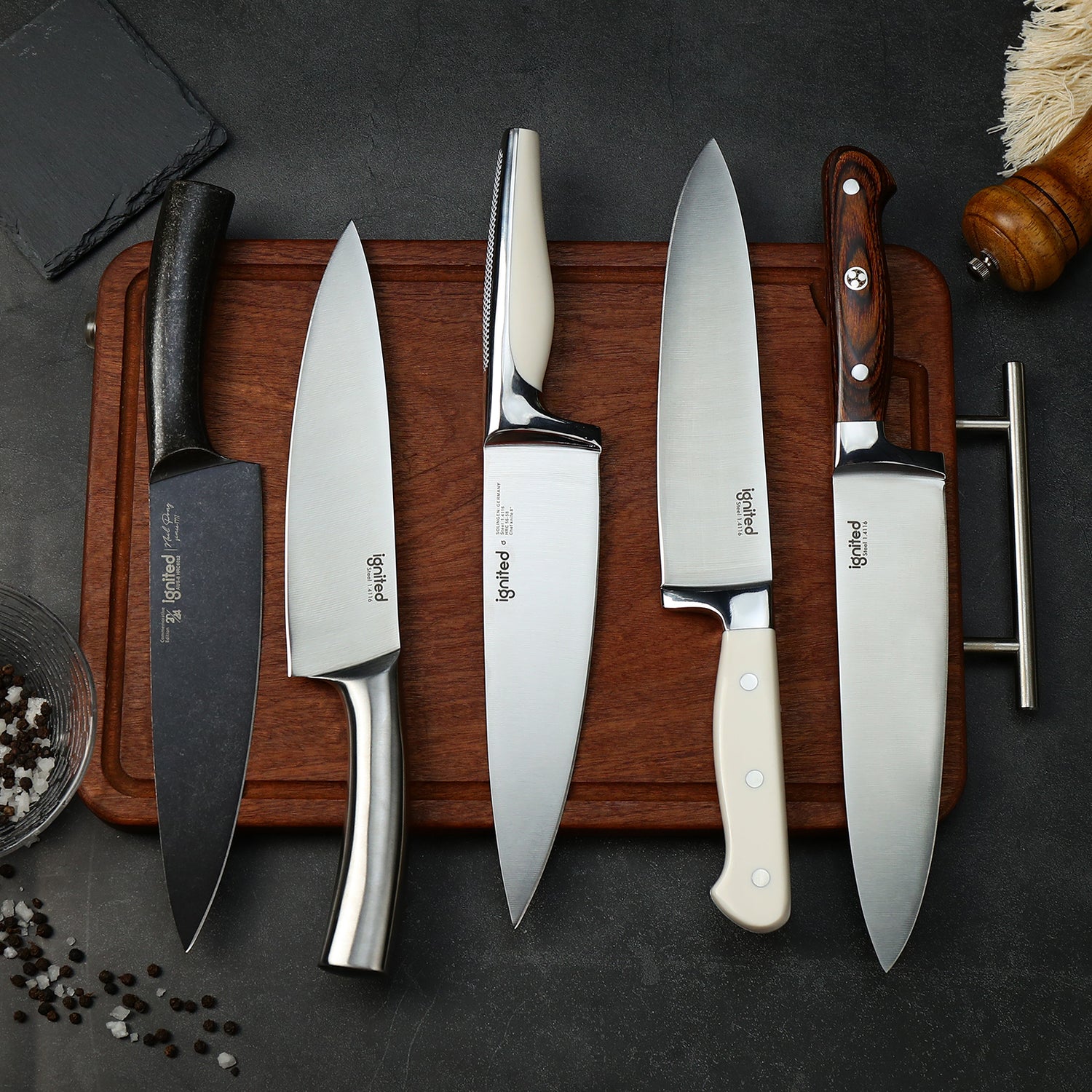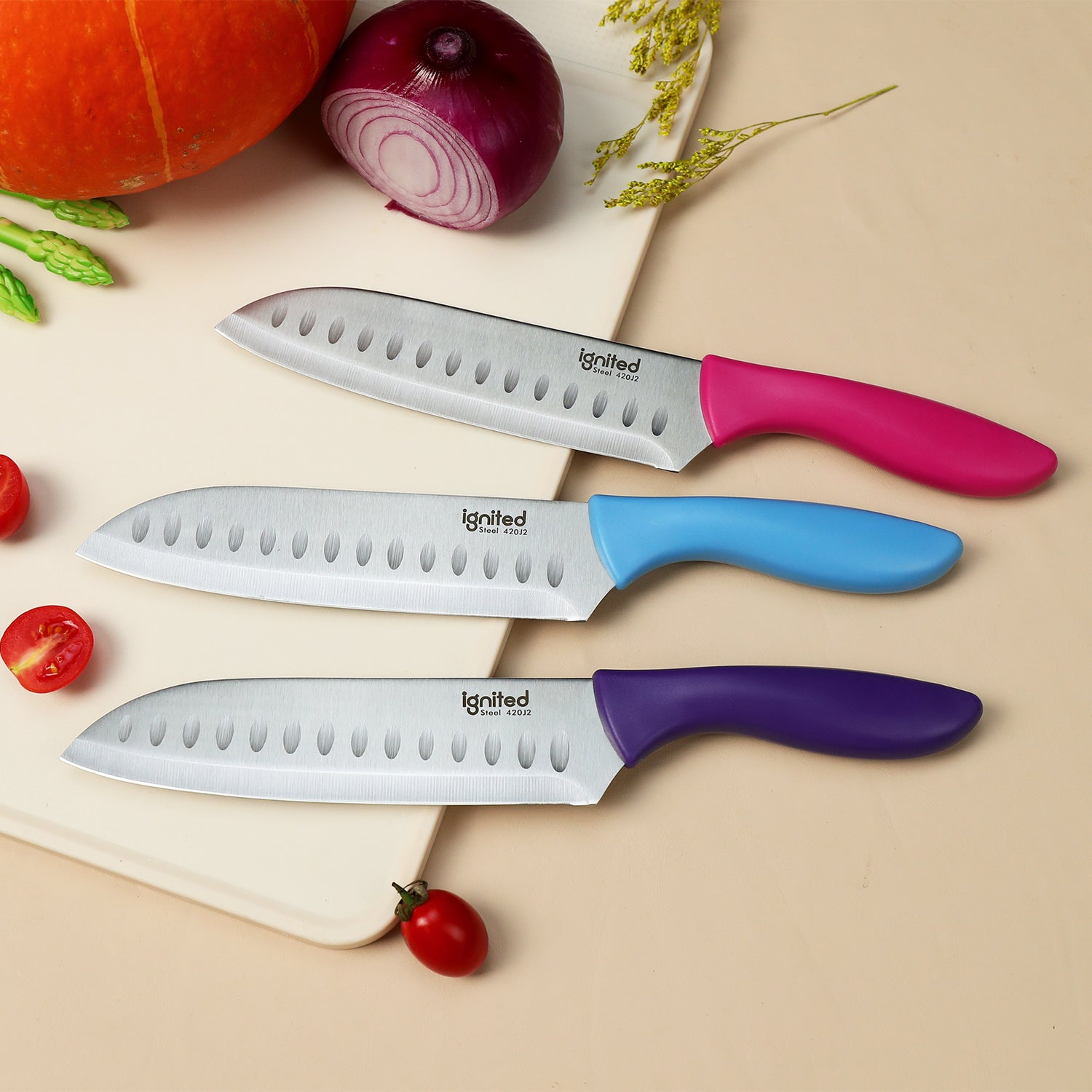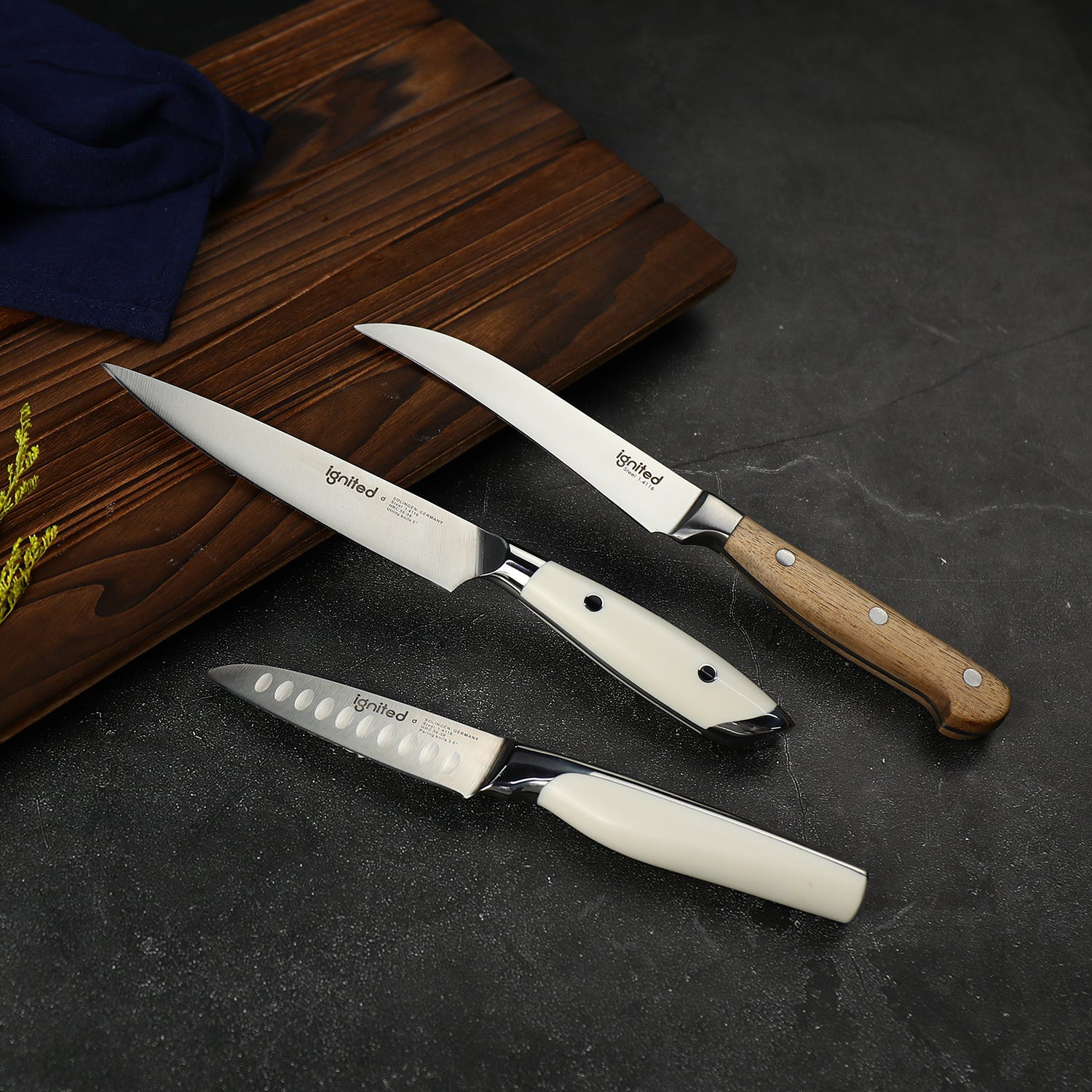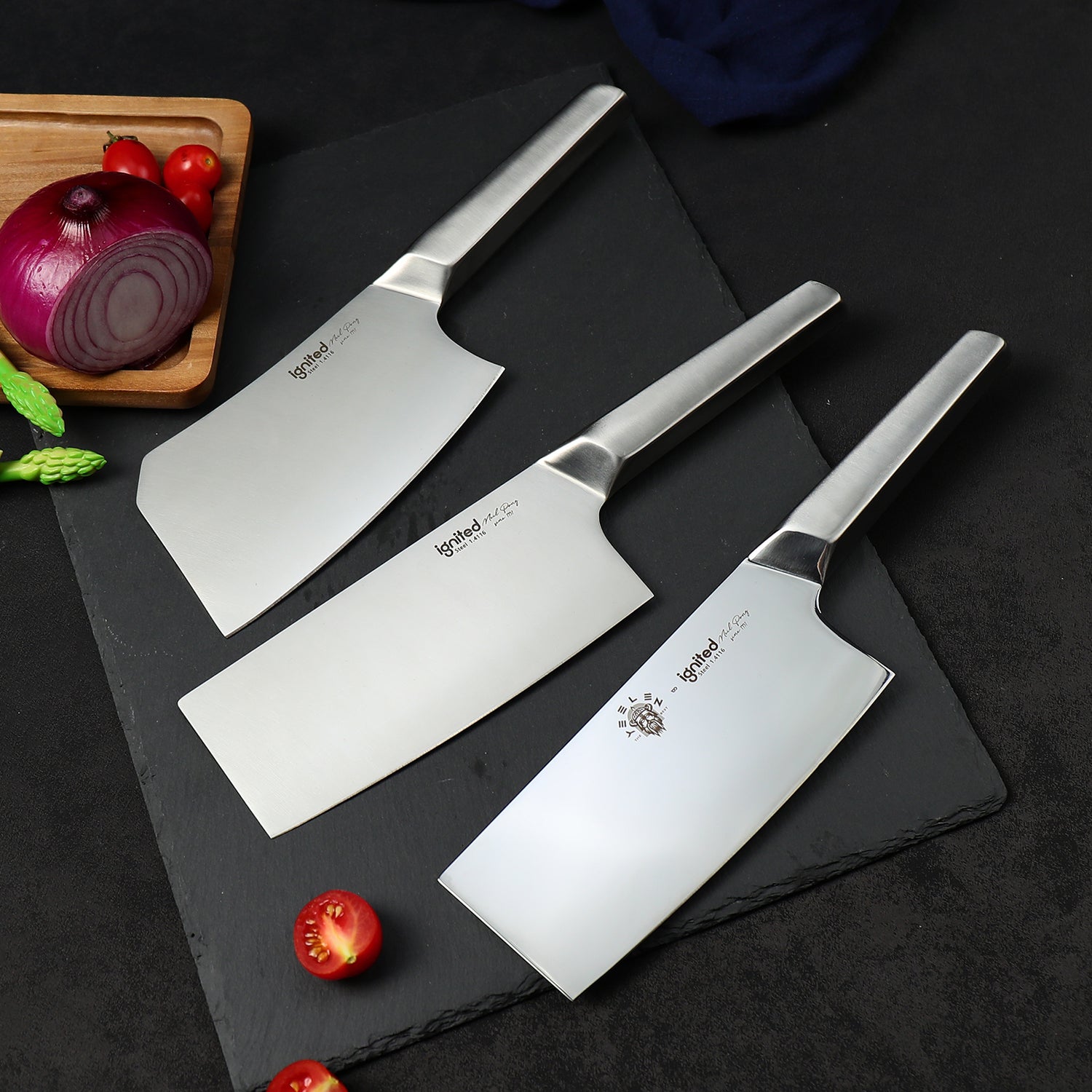Introduction
When it comes to choosing the right kitchen knife, the debate between carbon steel and stainless steel is as old as modern culinary craftsmanship itself. Both materials offer distinct advantages—and knowing the difference can significantly impact your cooking experience.
In this guide, we’ll break down the key differences, advantages, and disadvantages of carbon steel and stainless steel knives, helping you make a more informed choice for your kitchen.
1. What Is Carbon Steel?
Carbon steel is an alloy composed mainly of iron and carbon, with very little chromium (typically less than 10.5%). It is renowned for its extreme sharpness, ease of sharpening, and responsiveness in the hands of professional chefs.
✅ Pros:
- Incredible Sharpness: Can be honed to an ultra-fine edge for precise cutting.
- Edge Retention: Maintains sharpness longer with proper care.
- Easy to Sharpen: Requires less effort to resharpen than stainless steel.
❌ Cons:
- Prone to Rust and Stains: Requires thorough drying and occasional oiling.
- High Maintenance: Reacts with acidic foods and can develop a patina.
- Not Dishwasher Safe: Moisture and detergents will damage the blade.
2. What Is Stainless Steel?
Stainless steel is a corrosion-resistant alloy that includes iron, carbon, and at least 10.5% chromium, which gives it its stainless properties. It is the most common material for modern kitchen knives.
✅ Pros:
- Rust-Resistant: Ideal for humid kitchens and low-maintenance users.
- Stain-Resistant: Maintains a clean, polished appearance.
- Dishwasher-Friendly (though not recommended): Less susceptible to water damage.
❌ Cons:
- Harder to Sharpen: Some types are more difficult to hone.
- May Lose Edge Faster: Especially with lower-grade steel.
- Less Responsive: Doesn’t provide the same “feel” as carbon steel.
3. Key Comparison Table
| Feature | Carbon Steel | Stainless Steel |
|---|---|---|
| Sharpness | Very High | Moderate to High |
| Edge Retention | Excellent (with care) | Good |
| Corrosion Resistance | Poor | Excellent |
| Maintenance | High | Low |
| Ease of Sharpening | Easy | Moderate to Difficult |
| Appearance Over Time | Develops patina | Maintains shine |
| Ideal For | Professionals, Purists | Home Cooks, Busy Kitchens |
4. Which Knife Should You Choose?
- Choose Carbon Steel If: You prioritize ultimate sharpness and edge precision, and you're comfortable with regular maintenance.
- Choose Stainless Steel If: You prefer convenience and rust resistance for daily cooking tasks.
5. Final Thoughts
Both carbon steel and stainless steel have their place in the kitchen. It’s not about which material is better, but which one is better for you. If you're a seasoned cook or a knife enthusiast, carbon steel might be your weapon of choice. If you're looking for practicality and durability, stainless steel is hard to beat.
Bonus Tip
For the best of both worlds, consider semi-stainless steels or high-carbon stainless steel blades—these combine some of the edge performance of carbon steel with the corrosion resistance of stainless steel.
Explore premium carbon and stainless steel knives in our Knife Collection – curated for every kitchen and cooking style.




